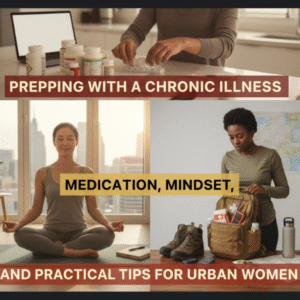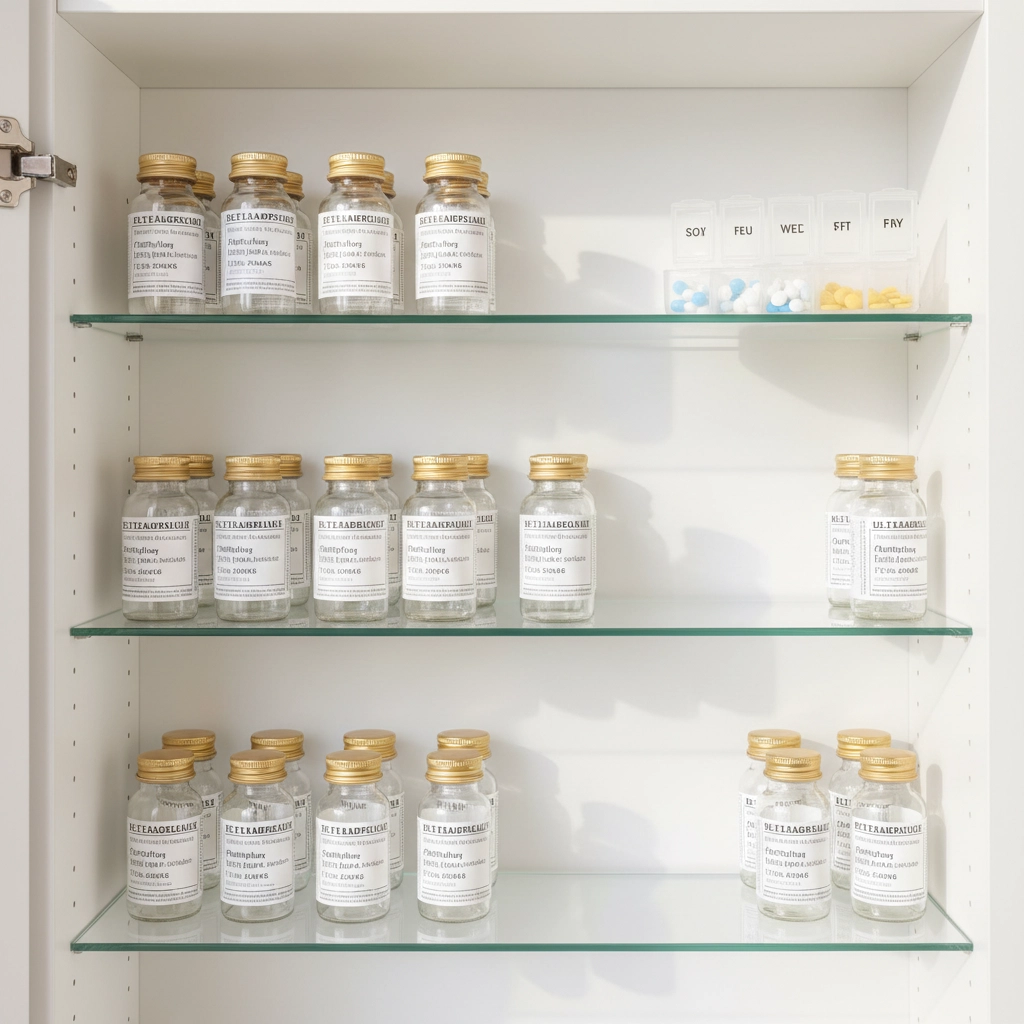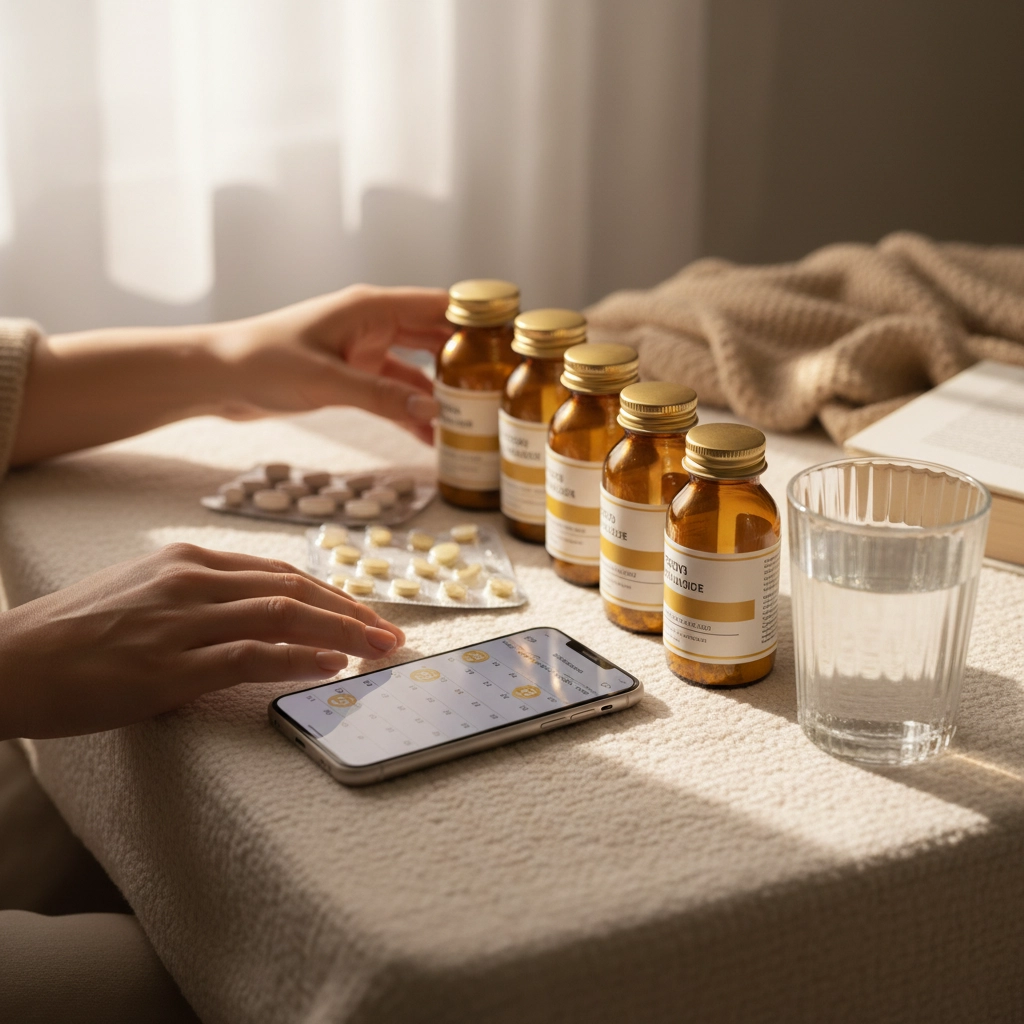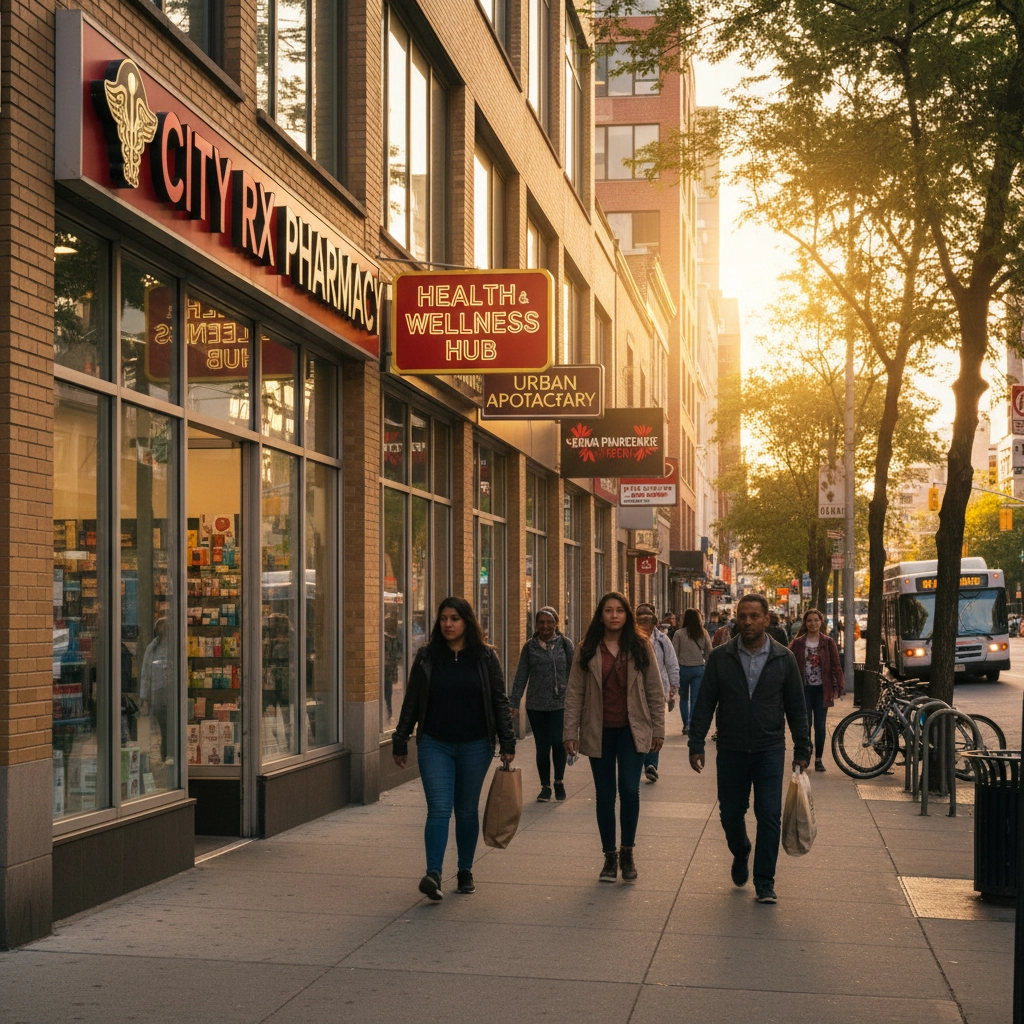
A topic that doesn’t get talked about enough in prepping circles is managing chronic illness while building your emergency preparedness plan. If you’re dealing with diabetes, autoimmune conditions, heart disease, mental health medications, or any other condition that requires daily management, you’re not alone – and you absolutely can prep effectively, even in an urban apartment setting.
There’s no shame in needing medication to function. In fact, recognizing your needs and planning for them is exactly what smart prepping is all about. Let’s explore practical, manageable steps that work for real life.
For prepping with a disability, read my article here, and listen to my two-part podcast episode with two ladies with disabilities who share their experiences and challenges.
Building Your Medication Stockpile (The Right Way)
The golden rule of medication prepping is simple: always stay above your baseline. This doesn’t mean hoarding or doing anything illegal – it means being strategic and working within the system.
Start with the 90-day rule. Most insurance plans allow 90-day fills, especially for maintenance medications. If you’re currently doing 30-day fills, call your insurance company and ask about switching to 90-day supplies. This immediately gives you more cushion.
Talk to your doctor honestly. Tell them you want to have extra medication on hand for emergencies. Many doctors are understanding about this, especially post-pandemic. They might write prescriptions for slightly larger quantities or have samples to build up your reserve.
Use the “vacation method.” When you go on vacation (even a long weekend), fill your prescription before you leave. This helps you stay ahead of your refill schedule naturally.

Know your pharmacy’s policies. Some pharmacies allow you to fill prescriptions a few days early each month. Even filling 3-5 days early each month adds up over time. Chain pharmacies often have more flexibility than smaller ones.
Consider mail-order options. Many insurance plans offer mail-order pharmacies with better pricing for 90-day supplies. While you lose the personal relationship with your local pharmacist, you often gain cost savings and convenience.
Smart Storage and Organization
Living in an apartment or small urban space means getting creative with medication storage. Your medication stockpile doesn’t need to take over your bathroom cabinet.
Invest in a proper medication organizer system. Skip the basic daily pill organizers and get a system that works for your lifestyle. Weekly organizers with morning/evening compartments work well for most people. For complex regimens, consider monthly organizers.
Create a medication inventory sheet. List every medication, dosage, prescribing doctor, and pharmacy. Include NDC numbers if possible – these help pharmacies identify exact medications quickly. Keep copies in your go-bag, with your emergency documents, and in cloud storage.
Store medications properly. Most medications should be stored in a cool, dry place. Your bathroom is actually one of the worst places due to the humidity. Consider a bedroom closet or kitchen cabinet away from the stove. Never store medications in cars or hot areas.
Diabetics: Both of my hubbies were diabetic, so I understand about being mindful of how to obtain and store insulin for emergencies. If you can receive extra insulin from your doctor, keep it in a small go-kit in your fridge so you can grab and go. While refrigerating insulin is ideal, if you lose power, it should still be fine; the key is not to let the insulin get hot (or freeze). Most insulin is fine at room temperature, some up to 46 days. Double-check with your doctor for non-refrigerated storage times for your particular insulin. If you use a pump, consider asking your doctor to prescribe an injectable in case your pump malfunctions or you lose power. Also, consider purchasing a solar panel or power bank just for your pump.
When Money is Tight: Free and Low-Cost Resources
Emergency preparedness shouldn’t break the bank, especially when you’re already managing medical expenses.
Patient assistance programs are everywhere. Almost every major pharmaceutical company has programs for low-income patients. Websites like NeedyMeds.org and GoodRx can help you find programs and discounts.
Generic alternatives save money. Ask your doctor if generic versions are available. Sometimes doctors prescribe brand names out of habit, not necessity. Generics are just as effective and much cheaper.
Community health centers often provide sliding-scale pricing. These federally qualified health centers charge based on your income and can be significant cost savings for both appointments and medications.
Look into state prescription assistance programs. Many states have additional programs beyond Medicare and Medicaid. A quick search for “[your state] prescription assistance” usually brings up resources.
Shop around for pharmacies. Prices can vary dramatically between pharmacies for the same medication. Apps like GoodRx make it easy to compare prices quickly.
Low-Energy Day Strategies
Some days, chronic illness wins and energy is nonexistent. Your prepping efforts need to account for these realities.
Prepare for your worst days during your best days. When you’re feeling good, do a little extra. Fill prescriptions early, update your medication inventory, or research pharmacy locations.
Create simplified systems. Your emergency plan should work even when you’re having a terrible health day. Pre-written emergency cards with your medical information, pre-packed go-bags, and simplified medication systems all help.

Build in redundancy. Keep essential medications in multiple locations – your main supply, your purse/bag, your car, and your workplace if possible. This way, you’re never caught without medication because you forgot your bag at home.
Use technology to your advantage. Set up automatic prescription refills where possible. There are smartphone apps that track medications and set reminders, but if you are concerned about privacy and government overreach, you may want to make a manual spreadsheet or use a paper calendar for reminders. Many pharmacies now offer text reminders and delivery services.
Self-Advocacy in Emergencies
During emergencies, the healthcare system gets overwhelmed. You (or someone who can speak on your behalf if you are unable) need to be prepared to advocate for yourself clearly and effectively.
- Carry comprehensive medical information. Include current medications, dosages, allergies, emergency contacts, and your primary care doctor’s information. Consider a medical alert bracelet or app like ICE (In Case of Emergency).
- Know the generic and brand names of your medication. In emergencies, you might need to communicate with unfamiliar healthcare providers. Knowing both names increases your chances of getting the right medication quickly.
- Understand the emergency warning signs of your condition. Know when your chronic condition becomes an acute emergency, and don’t hesitate to seek help. Having a clear understanding helps you communicate urgency to healthcare providers.
- Keep insurance and identification documents accessible. Store copies in your phone, cloud storage, and physical copies in your go-bag. During disasters, your regular documents might not be accessible.
- If you have medication with you in your belongings, make sure to let anyone traveling with you know, so they can locate it during an emergency.
Urban-Specific Considerations
City living presents unique challenges and advantages for chronic illness prepping.
Identify multiple pharmacies in your area. Know which ones are open 24 hours, which ones typically have your medications in stock, and which ones are accessible by public transportation.
Consider delivery services. Many urban pharmacies now offer delivery services. This is incredibly valuable during bad health days or emergencies when leaving home is difficult.
Build relationships with your pharmacy staff. In smaller urban pharmacies, getting to know the pharmacists can be invaluable. They often remember your needs and can offer helpful advice about medication timing and interactions.
Plan for transportation challenges. Urban emergencies often disrupt public transportation. Have backup plans for getting to medical appointments and pharmacies that don’t rely on your usual transportation methods.

Your First Steps (Start Small, Win Big)
Feeling overwhelmed? Start with these manageable first steps:
- This week: Switch one medication to a 90-day fill if possible
- This month: Create a basic medication inventory list
- Next month: Identify three pharmacies in your area and introduce yourself
- Ongoing: Fill prescriptions 3-5 days early when possible
Remember, perfect preparedness doesn’t exist. The goal is to be better prepared than you were yesterday. Every small step matters, and you’re already showing strength by taking charge of your health and safety.
Managing chronic illness while building emergency preparedness takes patience and self-compassion. You’re dealing with more complexity than many other preppers, and that’s okay. Your unique needs don’t make you less capable – they make you more aware and, ultimately, better prepared.
Ready to take control of your emergency preparedness journey? Subscribe to our newsletter for more practical tips tailored to urban women, and check out our latest podcast episode for strategies that actually work in real life.
If this article has provided value to you, please consider a tip to help support my work. Scan the QR code. Thank you!



